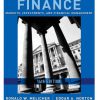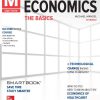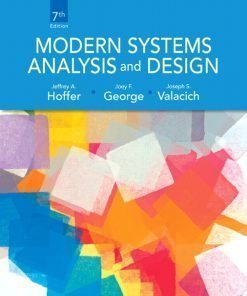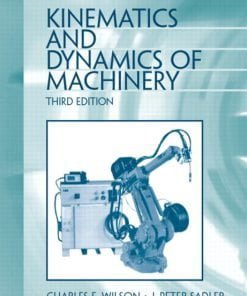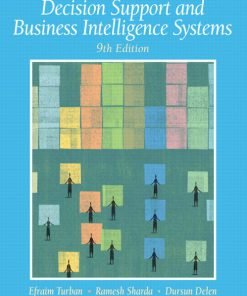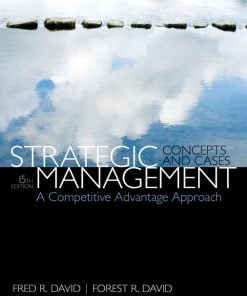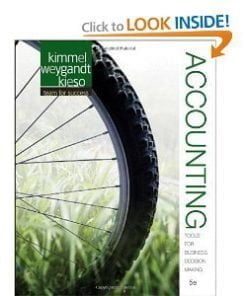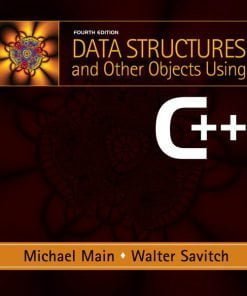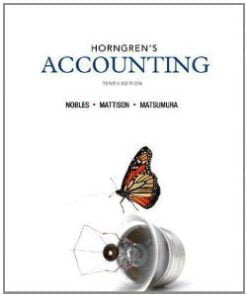Solution Manual for Modern Semiconductor Devices for Integrated Circuits Chenming C. Hu
$35.00 Original price was: $35.00.$26.50Current price is: $26.50.
Solution Manual for Modern Semiconductor Devices for Integrated Circuits Chenming C. Hu
This is completed downloadable of Solution Manual for Modern Semiconductor Devices for Integrated Circuits Chenming C. Hu
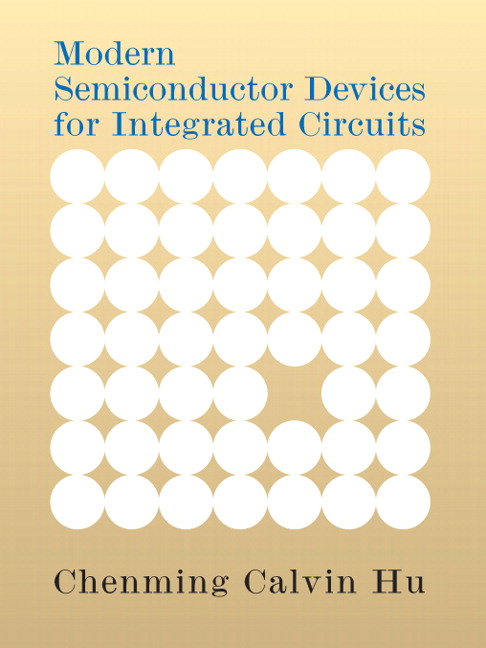
Product Details:
- ISBN-10 : 8131730247
- ISBN-13 : 978-0136085256
- Author: Chenming Calvin Hu
Prepare your students for the semiconductor device technologies of today and tomorrow.
Modern Semiconductor Devices for Integrated Circuits, First Edition introduces students to the world of modern semiconductor devices with an emphasis on integrated circuit applications. Written by an experienced teacher, researcher, and expert in industry practices, this succinct and forward-looking text is appropriate for both undergraduate and graduate students, and serves as a suitable reference text for practicing engineers.
Table contents:
1
Electrons and Holes in Semiconductors 1
1.1 Silicon Crystal Structure 1
1.2 Bond Model of Electrons and Holes 4
1.3 Energy Band Model 8
1.4 Semiconductors, Insulators, and Conductors 11
1.5 Electrons and Holes 12
1.6 Density of States 15
1.7 Thermal Equilibrium and the Fermi Function 16
1.8 Electron and Hole Concentrations 19
1.9 General Theory of n and p 25
1.10 Carrier Concentrations at Extremely High and Low Temperatures 28
1.11 Chapter Summary 29
PROBLEMS 30
REFERENCES 33
GENERAL REFERENCES 34
2
Motion and Recombination of Electrons and Holes 35
2.1 Thermal Motion 35
2.2 Drift 38
2.3 Diffusion Current 46
2.4 Relation Between the Energy Diagram and V, _ 47
2.5 Einstein Relationship Between D and μ 48
2.6 Electron—Hole Recombination 50
2.7 Thermal Generation 52
2.8 Quasi-Equilibrium and Quasi-Fermi Levels 52
2.9 Chapter Summary 54
PROBLEMS 56
REFERENCES 58
GENERAL REFERENCES 58
3
Device Fabrication Technology 59
3.1 Introduction to Device Fabrication 60
3.2 Oxidation of Silicon 61
3.3 Lithography 64
3.4 Pattern Transfer–Etching 68
3.5 Doping 70
3.6 Dopant Diffusion 73
3.7 Thin-Film Deposition 75
3.8 Interconnect–The Back-End Process 80
3.9 Testing, Assembly, and Qualification 82
3.10 Chapter Summary–A Device Fabrication Example 83
PROBLEMS 85
REFERENCES 87
GENERAL REFERENCES 88
4
PN and Metal—Semiconductor Junctions 89
Part I: PN Junction 89
4.1 Building Blocks of the PN Junction Theory 90
4.2 Depletion-Layer Model 94
4.3 Reverse-Biased PN Junction 97
4.4 Capacitance-Voltage Characteristics 98
4.5 Junction Breakdown 100
4.6 Carrier Injection Under Forward Bias–Quasi-Equilibrium Boundary Condition 105
4.7 Current Continuity Equation 107
4.8 Excess Carriers in Forward-Biased PN Junction 109
4.9 PN Diode IV Characteristics 112
4.10 Charge Storage 115
4.11 Small-Signal Model of the Diode 116
Part II: Application to Optoelectronic Devices 117
4.12 Solar Cells 117
4.13 Light-Emitting Diodes and Solid-State Lighting 124
4.14 Diode Lasers 128
4.15 Photodiodes 133
Part III: Metal—Semiconductor Junction 133
4.16 Schottky Barriers 133
4.17 Thermionic Emission Theory 137
4.18 Schottky Diodes 138
4.19 Applications of Schottky Diodes 140
4.20 Quantum Mechanical Tunneling 141
4.21 Ohmic Contacts 142
4.22 Chapter Summary 145
PROBLEMS 148
REFERENCES 156
GENERAL REFERENCES 156
5
MOS Capacitor 157
5.1 Flat-Band Condition and Flat-Band Voltage 158
5.2 Surface Accumulation 160
5.3 Surface Depletion 161
5.4 Threshold Condition and Threshold Voltage 162
5.5 Strong Inversion Beyond Threshold 164
5.6 MOS C—V Characteristics 168
5.7 Oxide Charge–A Modification to Vfb and Vt 172
5.8 Poly-Si Gate Depletion–Effective Increase in Tox 174
5.9 Inversion and Accumulation Charge-Layer Thicknesses
–Quantum Mechanical Effect 176
5.10 CCD Imager and CMOS Imager 179
5.11 Chapter Summary 184
PROBLEMS 186
REFERENCES 193
GENERAL REFERENCES 193
6
MOS Transistor 195
6.1 Introduction to the MOSFET 195
6.2 Complementary MOS (CMOS) Technology 198
6.3 Surface Mobilities and High-Mobility FETs 200
6.4 MOSFET Vt, Body Effect, and Steep Retrograde Doping 207
6.5 QINV in MOSFET 209
6.6 Basic MOSFET IV Model 210
6.7 CMOS Inverter–A Circuit Example 214
6.8 Velocity Saturation 219
6.9 MOSFET IV Model with Velocity Saturation 220
6.10 Parasitic Source-Drain Resistance 225
6.11 Extraction of the Series Resistance and the Effective Channel Length 226
6.12 Velocity Overshoot and Source Velocity Limit 228
6.13 Output Conductance 229
6.14 High-Frequency Performance 230
6.15 MOSFET Noises 232
6.16 SRAM, DRAM, Nonvolatile (Flash) Memory Devices 238
6.17 Chapter Summary 245
PROBLEMS 247
REFERENCES 256
GENERAL REFERENCES 257
7
MOSFETs in ICs–Scaling, Leakage, and Other Topics 259
7.1 Technology Scaling–For Cost, Speed, and Power Consumption 259
7.2 Subthreshold Current–“Off� Is Not Totally “Off� 263
7.3 Vt Roll-Off–Short-Channel MOSFETs Leak More 266
7.4 Reducing Gate-Insulator Electrical Thickness and Tunneling Leakage 270
7.5 How to Reduce Wdep 272
7.6 Shallow Junction and Metal Source/Drain MOSFET 274
7.7 Trade-Off Between Ion and Ioff and Design for Manufacturing 276
7.8 Ultra-Thin-Body SOI and Multigate MOSFETs 277
7.9 Output Conductance 282
7.10 Device and Process Simulation 283
7.11 MOSFET Compact Model for Circuit Simulation 284
7.12 Chapter Summary 285
PROBLEMS 286
REFERENCES 288
GENERAL REFERENCES 289
8
Bipolar Transistor 291
8.1 Introduction to the BJT 291
8.2 Collector Current 293
8.3 Base Current 297
8.4 Current Gain 298
8.5 Base-Width Modulation by Collector Voltage 302
8.6 Ebers—Moll Model 304
8.7 Transit Time and Charge Storage 306
8.8 Small-Signal Model 310
8.9 Cutoff Frequency 312
8.10 Charge Control Model 314
8.11 Model for Large-Signal Circuit Simulation 316
8.12 Chapter Summary 318
PROBLEMS 319
REFERENCES 323
GENERAL REFERENCES 323
Appendix I
Derivation of the Density of States 325
Appendix II
Derivation of the Fermi—Dirac Distribution Function 329
Appendix III
Self-Consistencies of Minority Carrier Assumptions 333
Answers to Selected Problems 337
Index 341
People Also Search:
modern semiconductor devices for integrated circuits chenming c. hu
modern semiconductor devices for integrated circuits chenming c. hu download scribd
modern semiconductor devices for integrated circuits chenming c. hu solution manual download pdf
Related products
Solution Manual
Solution Manual
Solution Manual
Management Information Systems Managing the Digital Firm Laudon 14th Edition Solutions Manual
Solution Manual
Solution Manual
Solution Manual
Solution manual for Accounting: Tools for Business Decision Making Kimmel Weygandt Kieso 5th Edition
Solution Manual
Solution Manual for Data Structures and Other Objects Using C++, 4/E Michael Main, Walter Savitch


